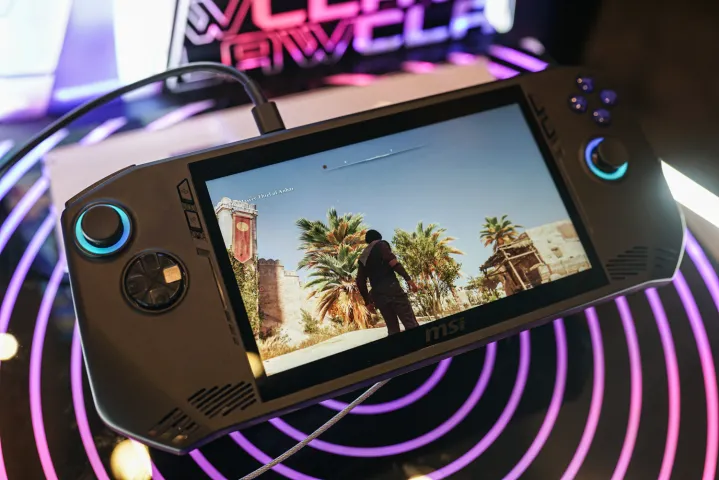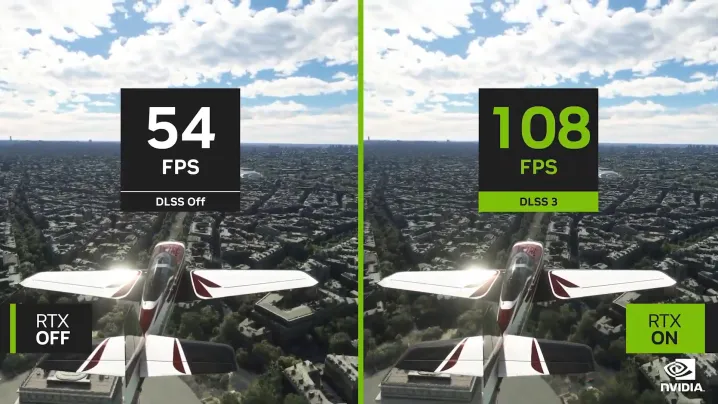
There’s a rising tide of handheld gaming PCs, and Nvidia is missing out on the action. The push of handhelds into the mainstream started with some purpose-built AMD systems on a chip (SoCs), but now Intel is joining the fray with its Meteor Lake platform. Out of the big three, only one company is missing: Nvidia.
Nvidia probably isn’t too concerned with making an SoC for handhelds — after all, it was AI that pushed it to become a trillion-dollar company — and it’s a long shot that the company would ever make one. With that in mind, consider what follows to be wishful thinking because Nvidia could make one insane SoC for handheld gaming PCs.
Charted territory

This isn’t totally uncharted territory for Nvidia. You probably know about the Tegra series of SoCs from Nvidia, which have been used in gaming devices in the past. The Tegra 3 was at the heart of the ill-fated Ouya game console, and most famously, the Tegra X1 powers the Nintendo Switch. Nvidia has since moved on with its SoC efforts, focusing on applications in autonomous vehicles and AI.
It’s not quite a one-to-one transition. You can’t just slap one of Nvidia’s SoCs inside a Windows handheld and expect things to work. They use ARM designs for the CPU cores, and they’re developed with other platforms in mind, so the software support isn’t there for a gaming device running SteamOS or Windows. At the very least, though, Nvidia can design the hardware.
There may not be a reason to design that hardware, given Nvidia’s massive strides in the data center, but it has the capacity to make it happen. Last year, Nvidia reported having over 26,000 employees, and according to a report from last year, Nvidia is already working on developing ARM-based PC chips for Windows PCs.
Just because Nvidia can do it, and Intel and AMD are already doing it, doesn’t mean that Nvidia should develop an SoC for handheld gaming PCs. It would make a lot of sense given Nvidia’s most recent graphics architecture, though.
All about efficiency

A major theme among Nvidia’s RTX 40-series graphics cards is efficiency. The cards rarely reach their maximum power draw, even when running demanding games. Compared to the previous generation, you’ll often get similar or higher performance at somewhere around 30% to 40% less power.
Efficiency is everything for a handheld, and that’s a big reason we still recommend devices like the Steam Deck OLED over more powerful handhelds like the Asus ROG Ally. Better efficiency leads to longer battery life, of course, but it also allows for better performance at lower power levels. We’ve actually seen that at work with the Steam Deck and ROG Ally, where the lead the Ally enjoys at higher power levels diminishes at lower power modes.
Although benchmark charts only show peak performance, there are a lot of other factors at play for a handheld, with battery life being chief among them. Even if an Nvidia-based gaming handheld didn’t provide the highest performance, it would certainly excel in battery life, and that’s a big deal when we’re talking about portable gaming.
DLSS for handheld

Another potential feather in Nvidia’s cap for handheld gaming is Deep Learning Super Sampling (DLSS). Although upscaling doesn’t play a major role for the Steam Deck’s 800p screen, it’s a vital tool as resolutions and refresh rates start scaling up. With the Ally’s 1080p screen, and devices like the Lenovo Legion Go pushing a 1600p screen, upscaling becomes a lot more important.
Most of these devices have some simple form of upscaling built in, or you can utilize tools like FidelityFX Super Resolution (FSR) in supported games. But by far, Nvidia’s DLSS offers the best balance of performance and image quality. It’s probably the main reason to buy an Nvidia GPU for your gaming PC today, and it would make a world of difference in a handheld.
On top of just upscaling, DLSS now includes Frame Generation. It’s basically a cheat code for performance, utilizing AI to generate new frames instead of rendering them. It’s a great feature to enable demanding settings like path tracing in Alan Wake 2, or to bump up your frame rates to the triple digits when using powerful desktop graphics cards. But it’s also a way to bring much weaker components up to par.
That’s what I’ve seen with devices like Surface Laptop Studio 2, which, by all accounts, is not a gaming laptop. Even with a weaker Nvidia mobile GPU, however, it’s able to play games like Cyberpunk 2077 at high settings and playable frame rates due to DLSS 3. The feature provides a shortcut to higher performance. It’s not the same as playing on a high-end desktop, but that’s not what you expect out of a handheld.
We can only hope

With the efficiency Nvidia has showcased this generation, and DLSS 3 at the helm, an Nvidia-based handheld gaming PC makes too much sense. It’s just a shame that it probably won’t happen.
Rumor has it that Nvidia is working with Nintendo on the Switch 2, but even that rumor is a bit fuzzy. If Nvidia does make another SoC targeted at gaming, there’s a good chance it will target these semi-custom applications where Nvidia designs the hardware and it leaves all of the software support to another company. That’s probably low on Nvidia’s list of priorities, too, considering there’s a lot more money to be made with its AI and enterprise efforts right now.
One can hope, though. Although the AMD-based handhelds we’ve seen have been excellent, and Intel’s recent push into the market looks promising, Nvidia’s lead in efficiency and AI-based upscaling would offer a massive boon to handheld gaming PCs. Maybe one day.




